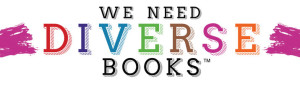8 Steps To All-Inclusive Reading
 I have written a lot here about the need to have more books in classrooms today that reflect the changing cultural diversity in America. According to the Cooperative Children’s Book Center, out of 3,500 children’s books in schools surveyed in 2014, only 180 were about black people. The numbers are even worse for books about Hispanics, Asians and Native Americans.
I have written a lot here about the need to have more books in classrooms today that reflect the changing cultural diversity in America. According to the Cooperative Children’s Book Center, out of 3,500 children’s books in schools surveyed in 2014, only 180 were about black people. The numbers are even worse for books about Hispanics, Asians and Native Americans.
I attended this wonderful panel discussion at the Harlem Book Fair a couple of weeks ago that brought together diverse writers and publishers to discuss how to change this. They all agreed that multicultural literature is the future, and as one panelist said “If we are going to be an inclusive society, we need diverse books.”
Stacy Whitman of the famed multicultural publisher, Lee and Low Books, gave out this great list of ways to make reading more inclusive:
- Does your book list or collection include books with characters of color? LGBTQ? Differently-abled?
- Does it include books with a main character of color? LGBTQ? Differently-abled?
- Does it include books written or illustrated by a person of color? Of different nationalities, religions or sexual preferences?
- Are there any books with a person of color on the cover? Do the characters on the book covers accurately reflect the characters in the book?
- Think about your student population. Does your list provide a mix of “mirror” books and “window” books for your students—books in which they can see themselves reflected and books in which they can learn about others?
- Think about the subject matter of your diverse books. Do all your books featuring black characters focus on slavery? Do all your books about Latino characters focus on immigration? Are all your LGBTQ books coming out stories?
- Do you have any books featuring diverse characters that are not primarily about race or prejudice?
- Consider your classic books, both fiction and nonfiction. Do any contain hurtful racial or ethnic stereotypes, or images (e.g. Little House on the Prairie or The Indian in the Cupboard? If so, how will you address those stereotypes with students? Have you included another book that provides a more accurate depiction of the same culture?
I think this is a great list that all librarians and educators should seriously consider when selecting future books! I also found this video that is helpful.